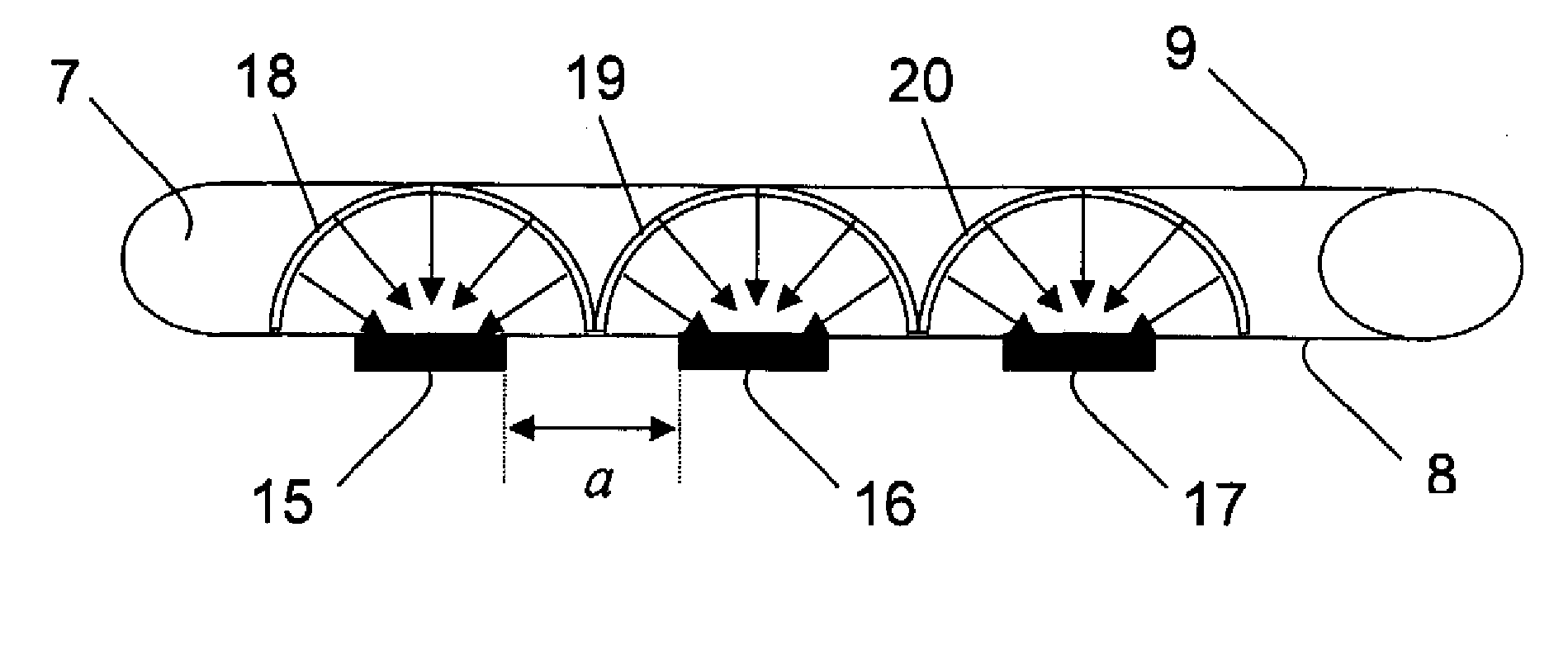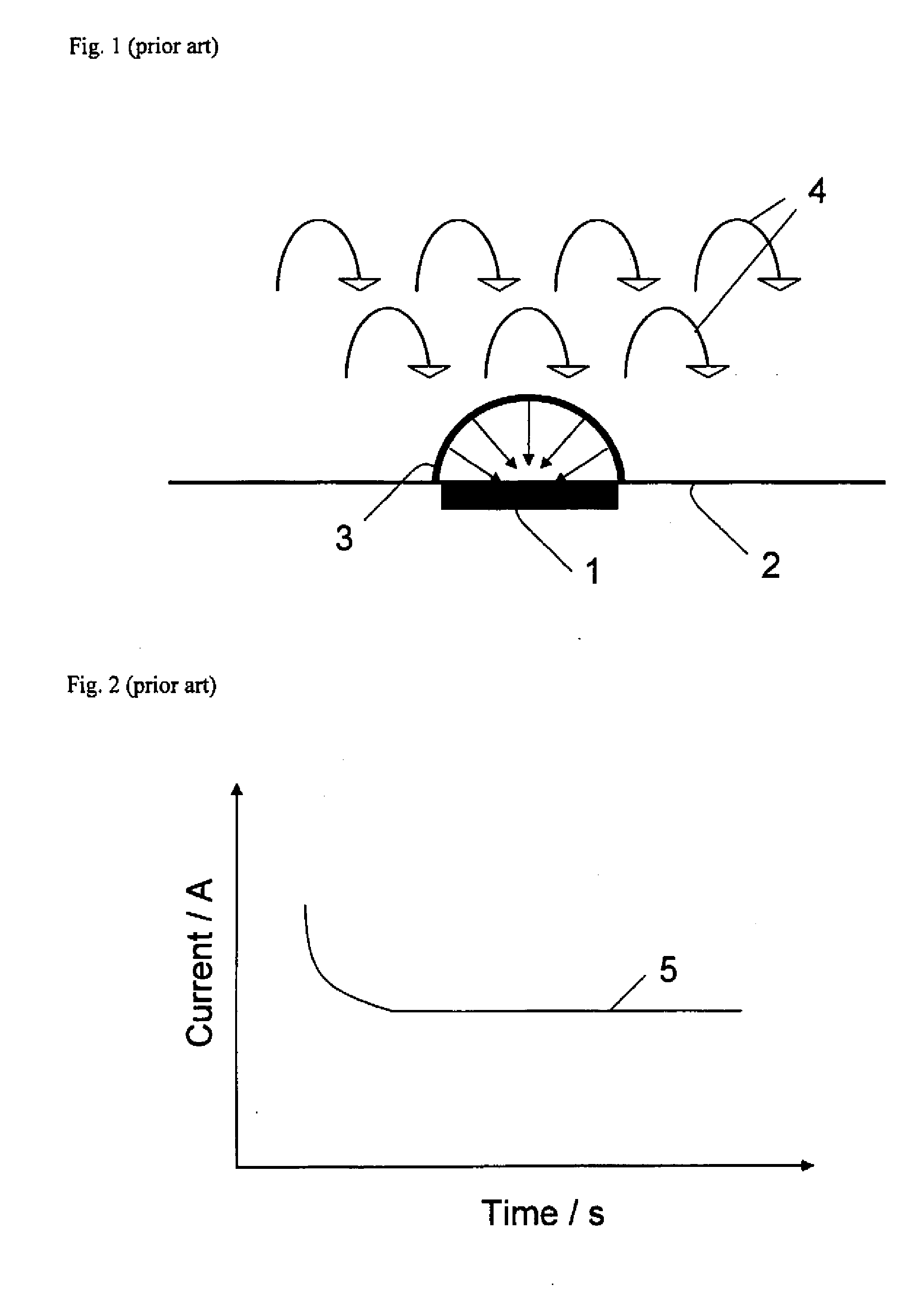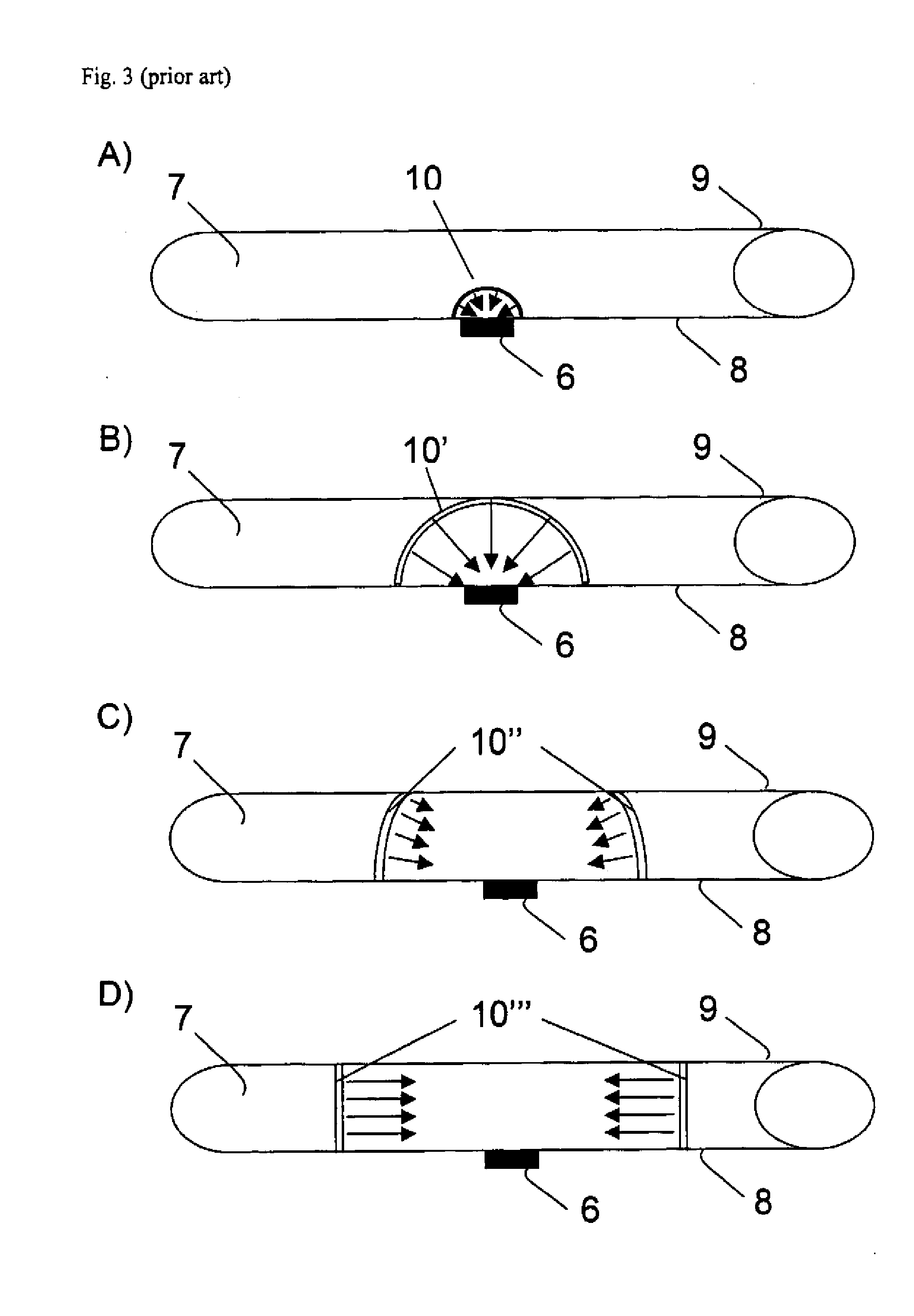Miniaturised Biosensor with Optimized Amperometric Detection
a biosensor and amperometric detection technology, applied in the field of amperometric sensors, can solve the problems of limiting the signal that can be obtained from a small sample size, weakening of the solution, and important limitation of the performance of miniaturised analytical systems, and achieve the effect of optimizing amperometric detection
- Summary
- Abstract
- Description
- Claims
- Application Information
AI Technical Summary
Benefits of technology
Problems solved by technology
Method used
Image
Examples
Embodiment Construction
[0084]Microelectrode in a Semi-Infinite Environment (Prior Art)
[0085]It is well known in electrochemistry that microelectrodes (1) are more sensitive than macroelectrodes because of the favorable ratio of diffusion current versus capacitive current. As schematically illustrated in FIG. 1 for a semi-infinite environment, the use of a microdisc electrode (1) placed on a solid wall surface (2) induces a hemispherical diffusion layer (3) which optimises the detection of the molecules dissolved close to the sensing area (namely the electrode surface). As illustrated in FIG. 1, the thickness of the diffusion layer (3), which has a hemispherical shape, is limited to about the radius of a circular microelectrode (see for instance H. H. Girault, Analytical and physical electrochemistry, EPFL Press, 2004, Lausanne (Switzerland), pp. 282-286 for theoretical details). In a semi-infinite plan above the diffusion layer, natural convection (4) provides a homogeneisation of the solution and therefo...
PUM
 Login to View More
Login to View More Abstract
Description
Claims
Application Information
 Login to View More
Login to View More - R&D
- Intellectual Property
- Life Sciences
- Materials
- Tech Scout
- Unparalleled Data Quality
- Higher Quality Content
- 60% Fewer Hallucinations
Browse by: Latest US Patents, China's latest patents, Technical Efficacy Thesaurus, Application Domain, Technology Topic, Popular Technical Reports.
© 2025 PatSnap. All rights reserved.Legal|Privacy policy|Modern Slavery Act Transparency Statement|Sitemap|About US| Contact US: help@patsnap.com



